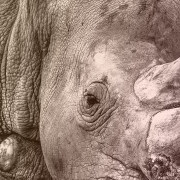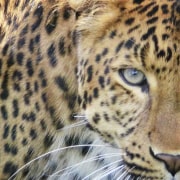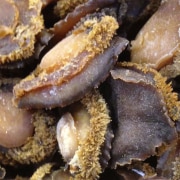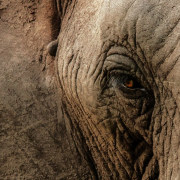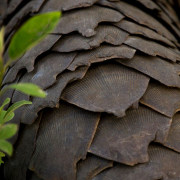|
Getting your Trinity Audio player ready...
|
Consider this statement: “Bribes can make up to 10% of the wholesale value of ivory in Asia.”
And given that according to an investigation by the Wildlife Justice Commission (WJC), raw ivory currently commands a price of between US$597/kg and $689/kg, on the Asian market – down from a mind-boggling high of $2 100/kg in 2014 – it’s clear that those willing to be bribed stand to make a tidy sum for their efforts.
In our series on corruption in wildlife, forest and fisheries crime, we presented an overview in part 1, and in this instalment we discuss the link between wildlife crime and corruption. In part 3 we explore the link between wildlife crime and other crime, and in part 4 we will highlight a recently released case study by the Wildlife Justice Commission (WJC) on South Africa’s long-standing perlemoen, or abalone, smuggling trade. In the final part 5, we will focus on the money laundering methods and routes used to spirit away the proceeds of these crimes.
The statement at the top was uttered by UNODC executive director Ghada Waly at a special event on the topic of wildlife crime, held at the 14th UN Congress on Crime Prevention and Criminal Justice in Kyoto, Japan, on 8 March 2021.
Wildlife crime would not occur without corruption, said Olivia Swaak-Goldman, executive director of the WJC, at the special event.
“Corruption facilitates the processing, sale and distribution of wildlife, so it’s really important that we address corruption if we’re going to be successful in addressing wildlife crime,” Swaak-Goldman said. “The WJC’s Operation Dragon looked into the trafficking of turtles and tortoises across Southeast Asia. All the traffickers we spoke with mentioned their corrupt facilitators that help them conduct these criminal activities.”
Operation Dragon took place from 2016 to 2019. It disrupted eight criminal networks operating across India-Pakistan-Bangladesh-Sri Lanka-Malaysia-Thailand, and documented the corruption in the transport hubs that facilitated this criminal activity. More than 6 000 freshwater turtles and tortoises, ranging from vulnerable to critically endangered, were seized. Several traffickers have already been convicted, WJC reported, while others are awaiting trial, and investigations continue, based on the WJC intelligence which was handed to authorities.
“Corruption, toothless laws, weak judicial systems and light sentences allow criminal networks to keep plundering wildlife with little regard to consequences,” noted WWF. “These factors make illegal wildlife trade a low-risk business with high returns. The poachers – often poor locals – are usually the only ones caught, leaving the real masterminds and their network safe and operational with the ability to strike again.”
Operation Dragon exposed corrupt officials at strategic airports and transport hubs across the countries named above. These criminals ensure that traffickers can smuggle wildlife without the risk of detection, and are a vital cog in the smuggling wheel. In many cases, reported WJC, the cost of doing business with the trafficker included the cost of corrupting a local official.
The many heads of the corruption hydra
As it does elsewhere, corruption takes many forms in this particular sector.
At the beginning of the chain, when poaching takes place, individuals and companies may use corruption, such as bribes or extortion, or personal relationships in order to obtain import and export permits or hunting licenses which they would otherwise not qualify for. Marceil Yeater of the Convention on International Trade in Endangered Species (CITES), in a paper published in 2011, wrote that public officials or officials from international organisations may also ask for illegal payments before issuing such a permit, or they may simply issue blank permits to individuals.
South Africa’s notorious Groenewald gang, headed by game farm owner Dawie Groenewald, procured rhinos apparently from SANParks, an investigation showed, but rather than conserving the animals, he intended to profit from them. Groenewald dehorned them and then killed them, so not only did he rake in the money from selling the horns, but he neatly did away with any costs associated with the upkeep of the rhinos, thereby maximising his profits. A burial site of over a dozen horn-less rhinos was found on his property in 2010.
Despite the length of time since the arrest of Groenewald and his accomplices – more than a decade – the gang is still awaiting trial.
In their 2012 report for TRAFFIC on the movement of rhino horn between South Africa and Viet Nam, Tom Milliken and Jo Shaw noted that South African government officials tasked with providing permits for rhino horn possession have been linked to subsequent horn thefts, having allegedly divulging information to criminal elements. “An armed robbery at Thaba Manzi lodge in Bela Bela, Limpopo, in October 2010, which included the theft of seven rhino horns from a safe, is alleged to have been connected to the provincial department that had recently been informed of the location of the horns for permitting purposes.”
Milliken and Shaw also noted evidence of the involvement of national and provincial conservation officials, from rangers up to management level, in the poaching of wild animals. Furthermore, corrupt government officials and forest patrols may accept bribes to turn a blind eye to illegal hunting or pseudo-hunting (an illegal practice in which fake hunters obtain a permit but an experienced hunter fires the shot), while some high-ranking wildlife officials were found to have undisclosed interests in hunting operations that benefited from receiving rhino hunting permits.
Then, once the items have been obtained through whatever nefarious means necessary, illegal payments may expedite the issuance of false export permits or notification documents.
At the border, corruption may facilitate the process of accepting or authorising exported shipments that may not comply with an import restriction, for instance. Bribery and other illegal methods may be brought into play, with customs and other border control officials accepting money to ignore smuggling, fraudulent documents, excessive export quantities, or exports without permits, among others. The UNODC, in its World Wildlife Crime report released in 2020, also documented the bribery of public officials to avoid the payment of tax, duties, tariffs and other fees.
Yeater noted occasional conflicts of interest between regulators and wildlife trade companies. For instance, “public officials have been found to maintain a personal or financial interest in wildlife trade enterprises that they are responsible for regulating”. She also pointed out a disturbing misuse of diplomatic immunity to breach wildlife regulations. For instance, “members of the diplomatic corps have allegedly used diplomatic sacks to transport wildlife parts from one region to another”.
Yeater also said some UN peacekeepers have been known to illegally purchase wildlife while on missions abroad, and illegally taken that wildlife home.
These are just a few of the ways in which corruption facilitates the trade and movement of animal, plant or fish parts.
Finally, corruption facilitates continued impunity after the fact. Environmental law specialist Julie Ayling, in her paper What Sustains Wildlife Crime?, noted the ongoing bribery of forest rangers and wardens to enable pouching, trading or trafficking of wildlife, as well as illegal payments to avoid investigations or to obstruct justice.
She also said that public officials and other institutions may help criminals launder the proceeds of wildlife crimes, by supplying networks with false documentation, laundering facilities for wildlife or products, and transport and holding facilities. “The effective distribution of horn to overseas markets undoubtedly requires participation by … private and public sector individuals and businesses.”
Is there a way forward?
The link between corruption and wildlife crime is documented in key instruments ranging from the UN General Assembly and CITES to resolution 8/12 of the 2019 UNCAC Conference of the States Parties. But the mere existence of these legal provisions is not enough.
Former CITES secretary-general John Scanlon, presenting a paper at a special UNODC event, stressed that law enforcement efforts alone will also not be sufficient to end corruption in the wildlife sector. “Continued work is needed on building and maintaining properly paid, trained and equipped civil services, including park rangers, which requires interaction with a range of other entities, as well as enhanced work on the linkages between illegal trade in wildlife, corruption, and the sustainable development goals.”
He advised that only through dedicated efforts to mitigate the risks of corruption in the trade chain, would the balance of power in the wildlife trade war be swayed. Making special mention of corruption on the government side, he said that by putting adequate integrity policies and procedures in place in national government structures, organised crime groups would find it harder to corrupt officials.
“Combating illicit trafficking of wildlife is inextricably linked to the fight against corruption.”
Look out for part 3 of this series, in which we examine the connection between wildlife crime and other types of organised crime.

